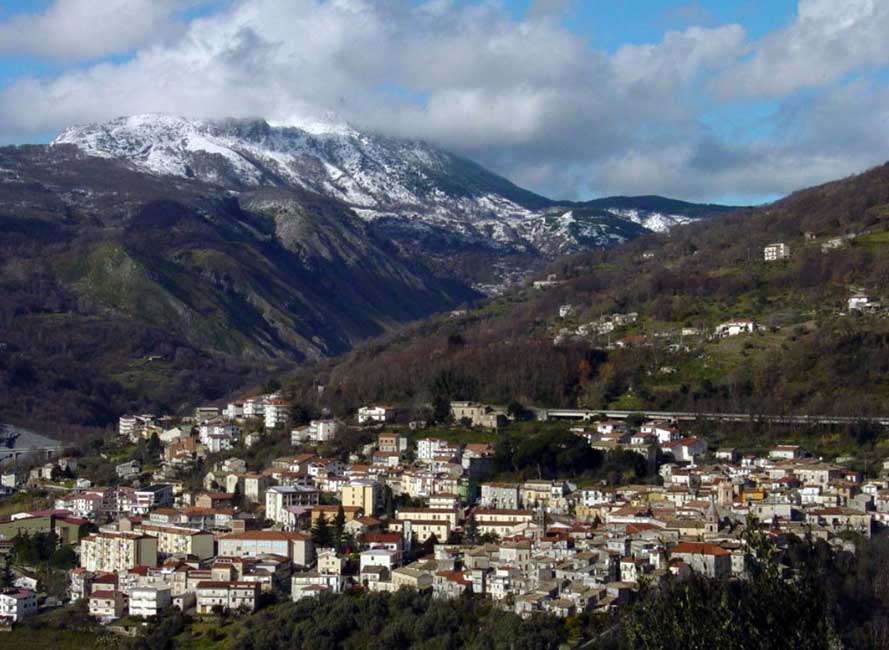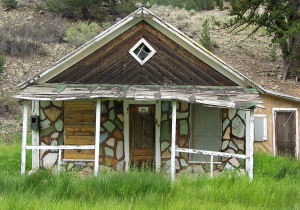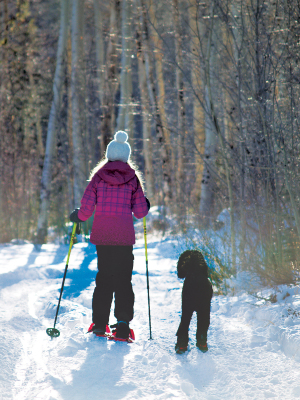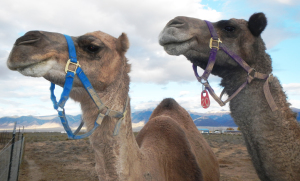by Mike Rosso
A recent decision by a town council 6,000 miles away has led to the first sister-city designation for Salida, Colorado.
Lago, in the province of Cosenza in the Calabria region of southern Italy, is the ancestral home of many early settlers to Salida, many of whose names are very familiar to locals.

A sister- or twin-city designation is an agreement between cities or towns to promote cultural and commercial ties. The concept of town “twinning” came about after World War II as a way to foster friendship and understanding between different cultures and to encourage trade and tourism.
The idea for a twin-city designation between Salida and Lago originated with Dr. Francesco Gallo, a self-proclaimed Laghitan who has done extensive research on emigrants from Lago, with much of his research focused on the Lago/Salida connection.
“It was my idea about the twin cities, and he [Lago mayor and architect Vittorio Cupelli] agreed with that and then wrote a letter to Mayor Jim Dickson,” said Dr. Gallo on a visit to Salida this past summer. On July 9, the mayor of Lago proposed the designation to Salida’s mayor, and on Aug. 19 the Salida City Council voted in favor of it: Resolution 2014-65, approving the designation of Lago, Italy as Salida’s Sister City.
Gallo’s book, The Lago-Salida Connection, Pioneers From Lago to Salida, was first released as a booklet in 2007; it has been updated and the third edition, released in 2014, contains 210 pages. It delves extensively into the history of both communities: their origins, geological and cultural features, as well as the reasons for the mass emigration from Lago between 1885 and 1920, and how many of the Laghitans ended up in Salida.
These early settlers worked the mines, the railroads and the smelting plants, laid brick for many of the homes and buildings still standing in Salida, and in some cases, took to farming and ranching for their livelihoods. It is estimated that about seven percent of the current population of Salida has ancestors traced to Lago and its surrounding villages.
“It wasn’t just for the money that they came here,” said Gallo, “They were trying to come out from the slump – they were almost dying in Lago. There was poverty, disease and mistreatment by landlords. Then they arrived here and eventually became landlords themselves.”
Known as the Italian diaspora – the period between the unification of Italy and the rise of Italian Fascism during the 1920s – it led to a large-scale migration of Italians away from their homeland. Diaspora means “scattering or dispersion” in Greek. Poverty was rampant in Italy during this period, especially in the rural regions. Land management practices at the time did not encourage local, small farming, as most of the land was owned by only a few wealthy nobles. According to Dr. Gallo, the average life expectancy for Italian males during the peak of emigration was 40 years old. Also, southern Italy experienced a population boom after the unification process, leading to a larger work force with few employment opportunities. It is estimated that between 1861 and 1985, 29,036,000 Italians emigrated to other countries, with 18,761,000 of those permanently settling abroad. In what has been termed “persistent and path-dependent emigration flow,” friends and family members who first arrive in a new country help other family members by sending back money for travel and assist them when they first get to the new and strange land.

Many early Italian immigrants settled in large cities on the East Coast of the U.S., as well as in San Francisco, Chicago and New Orleans; but many also ended up in Colorado, residing in places like Denver, Pueblo and Trinidad. In the early days, these new arrivals were discriminated against and were frequent targets of hate groups such as the Ku Klux Klan, who would terrorize them and burn crosses on their lawns. In fact, for many years Italians were not allowed to swim in the Salida community pool, a facility they themselves helped to build. Often settling in neighborhoods populated by other Italian immigrants, they were slow to learn English and enter mainstream American culture and often married among themselves.
Names like De Luca, Scanga, Pasquale, Veltri, Porco and Coscarella are all familiar to longtime Salidans, but other names, such as Post and Groy, were shortened or “anglicized” upon arrival in the United States. Post was shortened from Posteraro and Groy was originally Groe. Eventually all of these families overcame local prejudices and became important members of Salida society – owning and operating successful businesses and ranches and helping stamp Salida with a strong Italian identity.
Former Salida chief of police Leonard Post traces his ancestry back to Lago and recently returned with his wife Tenny from a trip to Italy, which included a visit to Lago. “The people were very friendly. It was a very interesting and old historic district, small rural setting, humid, with lush vegetation, nestled in hills with a tall mountain above. We felt safe in our travels there,” he said of their four days in Lago.
His grandfather, Achillo Posteraro, came to the U.S. from Lago in 1908. His great-grandfather, Saverio Posteraro arrived from Lago in 1885 (different lineage but the same name). They were able to meet with the mayor at a plaza in front of the city hall and had dinner together that evening. At a bakery in the municipal square, they met Paolo, son of the bakery owner who is a cousin to Salidan Frank Cicerelli. During the trip, Leonard and Tenny were able to meet many people named Posteraro, but who may not have been directly related, as many in the town have the same surname.
“Some residents asked if we knew of Dr. Gallo and the possibility of a sister city. The bed and breakfast where we stayed had a copy of Dr. Gallo’s book. When asking for a Lago map in the municipal building, we met a man who worked with Dr. Gallo. A guide whom we had arrangements with was familiar with the idea. We made friends with the family that owns the hardware store, and he wants to visit Salida if we become sister cities,” said Post of his visit there. “Anyone interested in Salida’s heritage or anyone with heritage from the Lago area would be interested in visiting Lago.”
Also on a visit to Lago in 2014 was Terry Scanga, owner of Scanga Meat Company and district manager of the Upper Arkansas Water Conservancy District. Scanga began his own research into his ancestry after reading Dr. Gallo’s first booklet. His grandfather, Guiseppe Scanga, emigrated to Salida from Lago in 1886 and ranched in the Poncha Springs area. Years later Guiseppe moved back to Italy and acquired an old monastery near Lago, continuing to ranch there until he passed away, never to return to Salida.
Terry and his wife Beverly enlisted the help of a local retired postmaster, Pasquale Barone, who was likely a relative of Pietro Barone, an early Salida resident who came to Salida as a 17-year-old and lived with Guiseppe upon his arrival. With his help, they were able to find the old farm, identifiable due to an old chapel and olive oil press on the property. It was Terry who personally delivered a letter and city seal from Mayor Dickson to Lago Mayor Cupelli and was able to join him for several meals. Also, coincidentally, the vice mayor of Lago is a Scanga – Enzo Scanga. The Scangas will present a travelogue of their adventures in Italy on Jan. 21, 2015, at 7 p.m. at the Salida SteamPlant.
The town of Lago is located on a hillside above a river valley, 1,600 feet (485 meters) above sea level. It is surrounded by three mountains: Mount Virzi, Mount Difesa Laghitello and Mount Cocuzzo, the tallest of the three at 5,055 feet. It is located 26 miles (42 kilometers) from Cosenza, the capital of the province, and 4.5 miles from Amantea, on the Tyrrhenian Sea. Although its name translates as “lake” in Italian, there is no large lake in the vicinity.
Terry Scanga explained that the region was once part of the Byzantine or Eastern Roman Empire and that Egyptian soldiers camping at the base of Mount Virzi around 918 A.D. may have named it after one of their kings. Lago’s current population is 2,800; in 1951 it numbered 6,673, but the population has since been in decline. Most residents are blue-collar, working in the service industry, such as teachers, shop owners and municipal employees. Like Salida, it has a sunny climate and is surrounded by forests. It also straddles a river, the Eliceto, though it runs dry for many months of the year.
On the first week in January, the Laghitan women parade with their baskets full of “cullura, turdilli and scalille” as a symbol of good luck, delivering them to the general public for the event. Every March, there is a carnival, (“A Harza,”) with dress parades and performances, traditional fried sausages and dancing the Tarantella – a group of upbeat Italian folk dances.
With the new twin-city designation, Salidans are encouraged to visit Lago – those with ancestors, or those just wanting to visit a lovely Italian mountain town with strong ties to Salida.
“We are just like cousins,” explains Dr. Gallo. “When people from Salida go to Lago, they are going to find many relatives there, and vice versa for those Laghitans who come to Salida. What we are trying to do is bring people together. To make the world smaller than what it is. That is the idea behind all this.”
If you go: Lago is about 270 miles (433 km) from Rome. To get there, you could drive on the Autostrada A3 motorway south from Naples or take a train to Amantea, Cosenza or Paola, and then a bus to Lago from those locations.
Links: www.salidaarchive.org/pages/pioneers.html • www.laghitaninelmondo.com





What a surprise and what a great article. Many of my family members on both my mother’s side(Cicerelli ) and my father’s side (Barone) settled in Salida. My mom’s cousin Francesco resides there with his wife Ida. It’s wonderful to hear about a place where so many of my ancestors resided after leaving Lago.